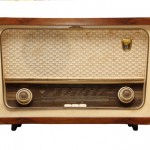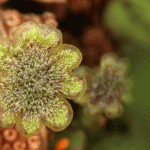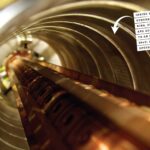
Good tonal qualities are essential for any violin. Image: Anton Balazh/Shutterstock
A bit of fungi and a modern violin can sound like a Stradivarius.
The famous luthier Antonio Stradivari (1644-1737) will always be remembered for the incredible tonal quality of his instruments, but a good violin doesn’t just depend on the expertise of its maker. The material used plays a major role in the sound — Stradivari made his from wood that had grown in the cold years between 1645 and 1715. The cooler conditions slowed the trees’ growth, causing the wood to grow evenly and produce low density and a high modulus of elasticity — both of these qualities essential for a good violin tone wood.
Modern luthiers have only been able to dream of producing violins with such amazing qualities. However, wood researcher Professor Francis Schwarze, from the Swiss Federal Laboratories for Materials Science and Technology, thinks he made have found a way to make violins that sound like this, using fungi.
This might seem like an unusual strategy, as fungi normally reduce the speed that sound waves can travel through wood. However, Schwarze examined two types of fungi (Physisporinus vitreus and Xylaria longipes) that decay Norway spruce and sycamore — both of which are used to make violins — and found that the decay improves their tonal quality.
“The unique feature of these fungi is that they gradually degrade the cell walls, thus inducing a thinning of the walls,” he explains. “But even in the late stages of the wood decomposition, a stiff scaffold structure remains via which the sound waves can still travel directly.”
Schwarze then worked with violin makers Martin Schleske and Michael Rhonheime to make mycowood (wood that has been decayed by fungi) violins, which were played by British violinist Matthew Trusler in a blind test against a Stradivarius. The jury and the majority of the audience all thought the mycowood violin was the real deal, but Schwarze points out that such a test will always be subjective. “There is no clear-cut, scientific method for measuring tonal quality.”
Still, this method could give young musicians a chance to play an instrument with the same sound quality of an expensive — often unaffordable — Stradivarius. And in case you’re concerned about your mycowood violin eventually decaying away, the wood is treated with ethylene oxide gas before it is made into a violin. “No fungus can survive that,” Schwarze confirms.
Source: Max Delbrück Center for Molecular Medicine and Charité






